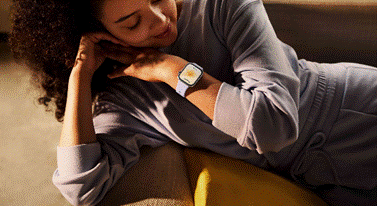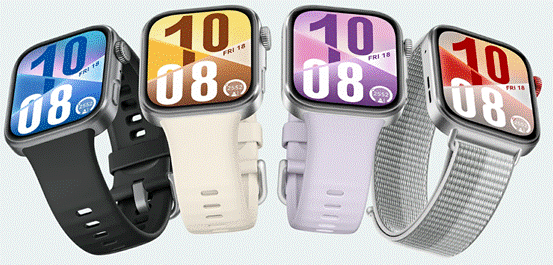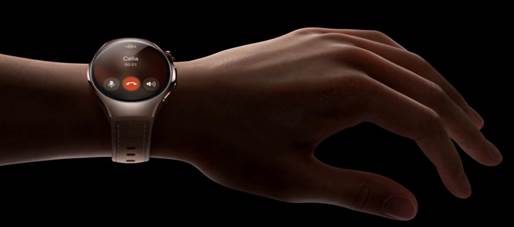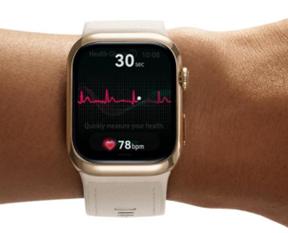Sleep
plays a vital role in overall health, yet many people struggle with poor sleep
quality due to stress, irregular schedules, or unhealthy habits. Smartwatches
have become powerful tools for understanding and improving sleep by tracking
key metrics like sleep stages, heart rate, and disturbances. Unlike traditional
sleep diaries, these devices provide objective data, helping users identify
patterns they might otherwise miss. For example, someone who feels tired
despite sleeping eight hours might discover their watch recorded frequent
awakenings due to noise or discomfort. By analyzing this data, users can make
informed adjustments to their routines. In this article, we’ll explore how to
set up a smartwatch for sleep tracking, interpret the data, and use its
features to build healthier sleep habits.

Setting Up Your Smartwatch for Sleep Tracking
To
get the most out of your smartwatch’s sleep-tracking features, proper setup is
essential. Start by ensuring the device fits snugly but comfortably on your
wrist—too loose, and it may miss data; too tight, and it could disrupt sleep.
Next, enable sleep mode to minimize distractions, such as turning off
notifications that might interrupt your rest. Many smartwatches also allow you
to input personal details like age, weight, and typical sleep goals, which help
tailor recommendations. For instance, if you’re an athlete, the watch might
prioritize tracking recovery metrics like heart rate variability (HRV).
Finally, sync your watch with a companion app to review trends over time. A
well-configured smartwatch becomes a seamless part of your nightly routine, quietly
gathering insights while you sleep.
Understanding Your Sleep Data
Key Sleep Metrics to Monitor
Smartwatches
track several critical sleep stages, each serving a unique purpose in
restoration. Deep sleep, for example, is when the body repairs muscles and
strengthens the immune system—if your watch shows limited deep sleep, you might
need more relaxation before bed. Light sleep makes up the majority of the night
and helps with memory consolidation, while REM sleep, linked to dreaming,
supports emotional regulation and creativity. Awake time, though often viewed
negatively, is normal in small amounts; frequent or prolonged awakenings,
however, could signal issues like stress or an uncomfortable sleep environment.
By reviewing these metrics, users can pinpoint specific areas for improvement,
such as adjusting room temperature or reducing screen time before bed.
How to Interpret Sleep Trends Over Time
One
night of poor sleep isn’t cause for concern, but consistent patterns reveal
deeper insights. Most smartwatch apps display weekly or monthly trends,
highlighting correlations between lifestyle choices and sleep quality. For
example, you might notice that your deep sleep dips after late-night workouts
or that REM sleep improves on days you meditate. Some watches even score your
sleep nightly, providing a simple way to track progress. Over time, these
trends help you identify what works—like sticking to a consistent bedtime—and
what doesn’t, such as consuming caffeine after noon. By focusing on long-term
data rather than nightly fluctuations, you can make sustainable changes that
enhance sleep quality.
Smartwatch Features That Help Improve Sleep
Smart Alarms for Gentle Wake-Ups
Waking
up abruptly to a loud alarm can leave you groggy, but smartwatches offer a
gentler alternative. Using movement and heart rate data, these alarms trigger
during light sleep phases within a set window (e.g., 30 minutes before your
desired wake time). For instance, if your watch detects you’re already stirring
at 6:20 AM, it might vibrate softly instead of waiting for a harsh 6:30 AM
alarm. This results in a more natural transition to wakefulness, boosting
morning energy. Some watches even pair with sunrise simulators or calming
sounds to ease you out of sleep gradually. By aligning wake-up times with your
body’s natural rhythms, smart alarms can make mornings feel less rushed and
more refreshing.

Wind-Down Reminders and Bedtime Scheduling
Creating
a pre-sleep routine signals to your body that it’s time to rest, and
smartwatches can help enforce this habit. Wind-down reminders prompt you to
start relaxing an hour before bed, whether by dimming lights, avoiding screens,
or practicing breathing exercises. Bedtime scheduling takes this further by
analyzing your sleep patterns and suggesting optimal times to go to bed and
wake up. For example, if you need to be up by 7 AM and your watch knows you
typically take 15 minutes to fall asleep, it might recommend lights out by
10:45 PM for eight full hours of rest. Over time, these features train your
body to follow a consistent schedule, making it easier to fall and stay
asleep.
Common Mistakes to Avoid
While
smartwatches are powerful tools, misusing them can lead to unnecessary stress
or inaccurate data. One common mistake is obsessing over nightly scores—sleep
quality naturally varies, and fixating on small fluctuations can create anxiety
that worsens rest. Another pitfall is wearing the watch too loosely, which may
cause gaps in heart rate or movement tracking. Additionally, ignoring
environmental factors like room temperature or noise can skew results; your
watch might flag poor sleep without revealing the root cause. Finally, relying
solely on the device without making lifestyle adjustments defeats its purpose.
For best results, use the data as a guide, not a verdict, and pair it with
healthy habits like limiting caffeine and managing stress.
Conclusion
A
smartwatch can be a game-changer for sleep improvement, offering insights that
empower better habits. For those seeking advanced features, the huawei Watch Fit 4 stands out with its pro-level sleep monitor, providing detailed
breakdowns of REM, deep, and light sleep. Its all-new HRV indicators compare
daily data against personal baselines, alerting users to changes caused by
stress, illness, or lifestyle factors. Beyond tracking, the watch helps users
build bedtime routines and offers actionable health tips. By combining these
tools with consistent habits, you can transform your sleep quality—and overall
well-being—one night at a time.



